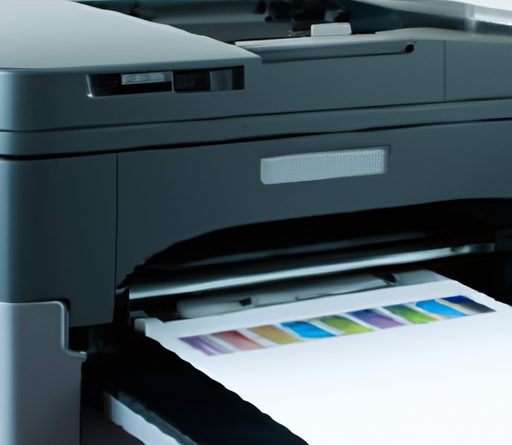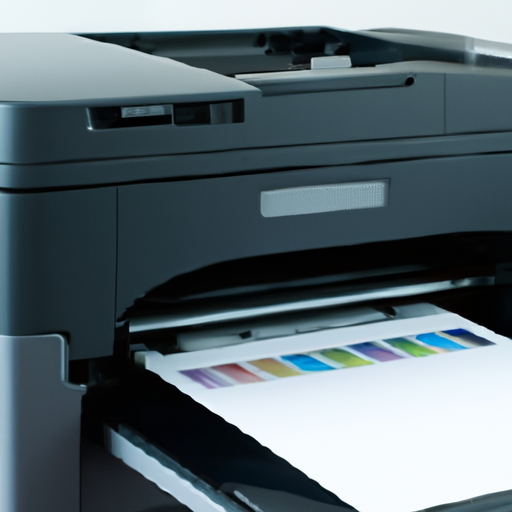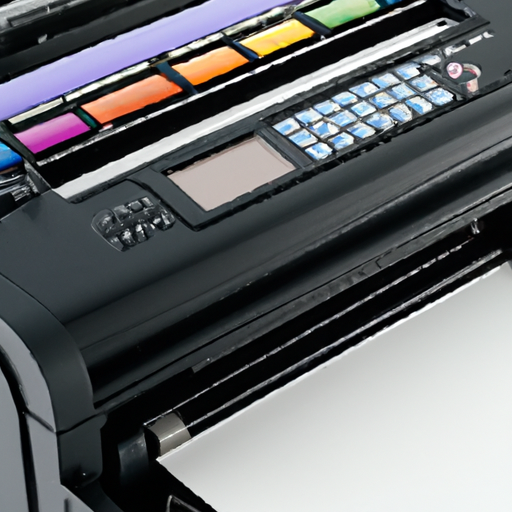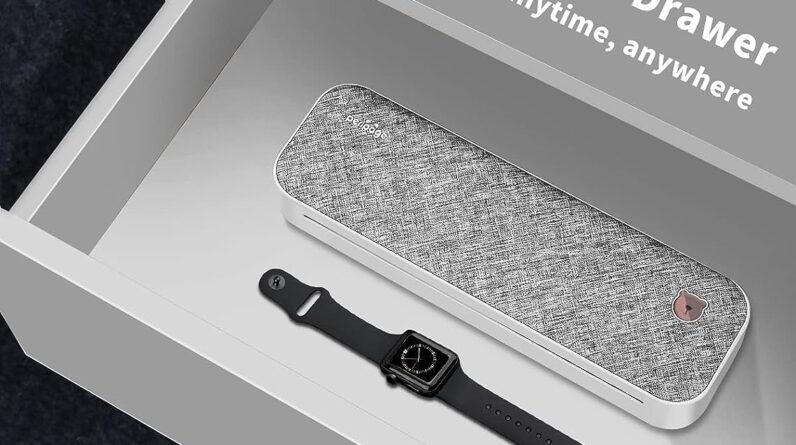
Disclaimer: This post may contain affiliate links. As an Amazon Associate, we earn from qualifying purchases.
Maintaining your inkjet printer in top condition is essential for optimal performance and longevity. With “Effective Tips to Clean Your Inkjet Printer,” you’ll discover valuable insights on keeping your printer clean and running smoothly. From step-by-step instructions and useful techniques to troubleshooting common issues, this article offers a comprehensive guide to ensure your printer produces crisp prints every time. Whether you’re a tech enthusiast or a casual user, these expert-backed tips will help you maintain the quality and extend the lifespan of your inkjet printer effortlessly.
Preparation
Before you start cleaning your inkjet printer, it’s important to gather all the necessary supplies. You’ll need lint-free cloths, distilled water, compressed air, a soft cloth, and any recommended cleaning solutions provided by the printer manufacturer. It’s also a good idea to have a small brush or cotton swabs on hand to help with those hard-to-reach areas.
Choosing a suitable location for cleaning your inkjet printer is essential. Find a well-ventilated area with a flat surface away from direct sunlight and other electronic devices. This will ensure that you can clean your printer without any distractions or potential damage from external factors.
Before you begin the cleaning process, make sure to power off your printer. This reduces the risk of any accidental damage and helps to ensure your safety during the cleaning process.
Cleaning the Exterior
To keep your inkjet printer looking clean and functioning properly, regular cleaning of the exterior is necessary. Start by removing any dust and debris that may have accumulated on the surface. You can use a soft cloth or a gentle brush to sweep away any loose particles.
Next, wipe down the outside surfaces of your printer with a lint-free cloth dampened with a mild cleaning solution or water. Be careful not to let any liquid get into the printer’s interior, as this can cause damage. Gently clean the buttons, control panel, and any other external parts, ensuring they are thoroughly dry before powering on your printer.
Don’t forget to clean the paper tray as well. Slide the tray out and remove any loose or stuck paper. Wipe the tray clean with a lint-free cloth and check for any debris that may have accumulated. This will help prevent paper jams and ensure smooth printing.
Cleaning the Print Head
The print head is a crucial component of your inkjet printer. Over time, it can become clogged with dried ink, leading to poor print quality or even printer malfunctions. Cleaning the print head regularly is essential to maintain optimal performance.
Accessing the print head may vary depending on your printer model. Consult your printer’s user manual or manufacturer’s website for specific instructions. Once you’ve accessed the print head, remove the ink cartridges carefully according to the manufacturer’s guidelines.
To clean the nozzles, use a lint-free cloth slightly dampened with water or a recommended cleaning solution. Carefully wipe the nozzles in a gentle circular motion to remove any built-up ink or residue. For stubborn clogs, you can use distilled water on the cloth. However, avoid using excessive water or any aggressive cleaning agents, as these can damage the print head.
After cleaning, reinstall the ink cartridges according to the manufacturer’s instructions. Ensure they are properly seated to maintain a good connection.
Cleaning the Ink Cartridges
Proper maintenance of your ink cartridges is essential for quality printing. Regularly checking for leaks or spills is an important part of this process. Inspect the cartridges for any signs of ink leakage, as this can cause smudging and poor print quality. If you notice any leaks, consult your printer’s manual or seek assistance from the manufacturer.
Using a soft cloth, gently wipe the ink cartridges to remove any dirt or residue. Be careful not to touch the nozzles, as this can interfere with the ink flow. If there is excess ink on the cartridges, carefully remove it with a lint-free cloth or paper towel.
Once you have cleaned the cartridges, reinstall them in the printer according to the manufacturer’s instructions. Make sure they are securely in place to avoid any printing issues.
Cleaning the Paper Path
To ensure smooth paper feeding and prevent paper jams, it’s essential to clean the paper path of your inkjet printer. Start by opening the printer cover and checking for any loose or trapped paper. Carefully remove any paper fragments or debris that may be obstructing the paper path.
For stubborn particles, you can use compressed air to blow them away. Hold the canister upright and use short bursts of air to dislodge any trapped dust or debris. Be cautious not to hold the compressed air too close to the printer’s internal components, as this can cause damage.
Once you have cleared the paper path, close the printer cover securely. This will help maintain a dust-free environment and ensure proper functioning of your printer.
Performing a Self-Cleaning Cycle
Many inkjet printers come with a self-cleaning feature that helps to keep the print heads clean. This process can be initiated through the printer’s settings or control panel. Access the printer settings and look for an option to run a self-cleaning cycle.
Initiate the self-cleaning process and allow the printer to complete the cycle. This can take several minutes, so be patient and avoid interrupting the process. The self-cleaning cycle helps to remove any residual ink or debris from the print head, resulting in improved print quality.
Using Printer Maintenance Tools
Most inkjet printers come with software that provides maintenance utilities to help keep your printer in optimal condition. Install the printer software on your computer and access the maintenance tools provided.
Within the maintenance utilities, you will usually find options to run cleaning and alignment tools. These tools can help unclog nozzles, improve print alignment, and resolve other common printing issues. Follow the on-screen instructions to run these tools and optimize your printer’s performance.
Regular Maintenance
Regular maintenance is key to prolonging the life of your inkjet printer and ensuring consistently high-quality prints. Here are some important tips to keep in mind:
- When your printer is not in use, it’s recommended to keep it covered to prevent dust accumulation. A printer cover or a simple cloth can provide sufficient protection.
- Always use high-quality ink cartridges that are recommended for your printer model. Inferior quality ink can cause clogs and damage the print head.
- Try to print regularly, even if it’s just a test page, to prevent ink from drying up and clogging the nozzles. This helps maintain the ink flow and improves print quality.
- Avoid using low-quality or damaged paper, as this can cause paper jams, ink smudging, or other printing problems. Always use paper that meets the specifications provided by the printer manufacturer.

Troubleshooting
While regular cleaning and maintenance can minimize issues with your inkjet printer, problems may still arise. Here are some common printer issues you may encounter and basic troubleshooting steps to try:
- Print quality issues: If your prints appear faded, streaky, or have missing areas, check the ink levels, clean the print head, and run the self-cleaning cycle.
- Paper jams: If paper gets stuck in the printer, carefully remove it and ensure there are no remaining fragments. Clean the paper path as explained earlier to prevent future jams.
- Connectivity problems: If your printer is not connecting to your computer or network, check the cables, restart both the printer and computer, and ensure the printer is connected to the correct network.
If basic troubles hooting steps don’t resolve the issue, it’s advisable to seek professional assistance. Contact your printer’s manufacturer or a certified technician who can provide further guidance and support.
hooting steps don’t resolve the issue, it’s advisable to seek professional assistance. Contact your printer’s manufacturer or a certified technician who can provide further guidance and support.
Safety Precautions
When cleaning your inkjet printer, it’s important to prioritize safety. Here are some safety precautions to keep in mind:
- Always unplug the printer from the power source before cleaning. This reduces the risk of electrical shock and other potential accidents.
- Avoid contact with moving parts. Printer components, such as the print head or paper feed, may still be in motion even when the printer is powered off. Be cautious and avoid touching these areas.
- When using liquid cleaners, exercise caution to prevent any damage to the printer. Use recommended cleaning solutions sparingly and avoid applying excessive moisture to prevent potential harm.
By following these cleaning tips and maintenance guidelines, you can keep your inkjet printer running smoothly and ensure high-quality prints every time. Regular cleaning and care will help extend the lifespan of your printer, saving you time and money in the long run.






